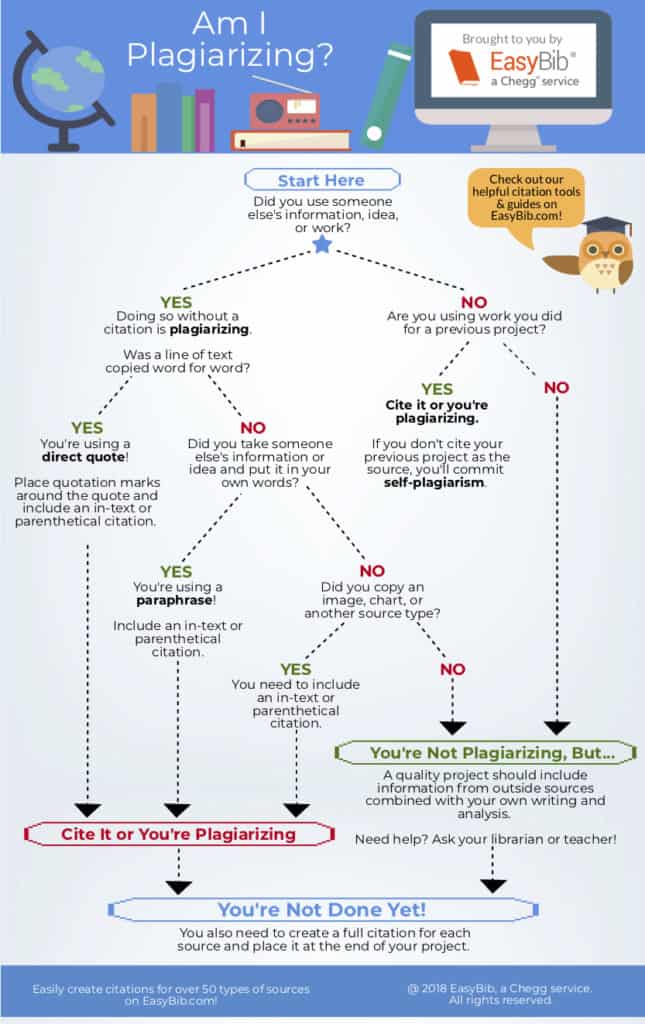
This guide is adapted from Seneca College Libraries and Simmons University Library. For information about reusing the guide, please contact lcc@senecacollege.ca or library@simmons.edu. Note: When copying this guide, please retain this box.
 This work is licensed under a Creative Commons Attribution-NonCommercial-ShareAlike 4.0 International License.
This work is licensed under a Creative Commons Attribution-NonCommercial-ShareAlike 4.0 International License.
MLA is an abbreviation which stands for Modern Language Association. MLA style is a set of guidelines for writing, formatting, and citing sources in scholarly works and student research papers and is most commonly used in the humanities and liberal arts.
In MLA, you must "cite" sources that you have paraphrased, quoted or otherwise used to write your research paper. Cite your sources in two places:
According to B.F. Skinner, behavior analysis is necessary for society because "almost all major problems involve human behavior" (24).
or
Behavior analysis is necessary for society because "almost all major problems involve human behavior" (Skinner 24).
Work Cited
Skinner, B.F. Beyond Freedom and Dignity. Alfred A. Knopf, 1971, p. 24.
Each entry on a works cited list is made up of elements that are common to most works and appear in a specific order. The correct punctuation appears at the end of each core element.
Adapted from the online MLA Style Center
MLA Style Center: What's New with the Ninth Edition includes information on formatting your research paper, citation practice template, FAQs, sample papers, and quick guide. They also provide citation guideline for common titles of online works.
![]()
Gaelen Pinnock, CC BY-SA 4.0 <https://creativecommons.org/licenses/by-sa/4.0>, via Wikimedia Commons

All online work submitted is subject to the University Honor Code, which is enforced by the Council of Deans and the University Judiciary Board. The Honor Code states: I pledge that this work is my own and I will not cheat, or represent the words, ideas, or projects of others as my own. I further pledge that I will not engage in academic dishonesty, which includes lying, stealing or assisting others in misrepresenting their work. As a member of the student body of Johnson C. Smith University, I also pledge to report all violations of the Honor Code that I observe in others. I understand that violations of the Honor Code are subject to disciplinary procedures by the University.
2024 JCSU Online Handbook (page 16)
Academic Integrity is very important to Johnson C. Smith University. Observing and acknowledging the Honor Code is related to class assignments including tests, quizzes, written papers, as well as other assignments that involve student assessments. The University reserves the right to limit access to its resources when policies or laws are violated and to use appropriate means to safeguard its resources, preserve network/system integrity, and ensure continued service delivery at all times. This includes monitoring routing information of communications across its network services and transaction records residing on University resources, scanning systems attached to the JCSU network for security problems, disconnecting systems that have become a security hazard, and restricting the material transported across the network or posted on University systems.
2024 JCSU Online Handbook (page 17)
Plagiarism is defined as intentionally or unintentionally using someone else's words, works, thoughts, or expression of ideas without giving proper credit. Plagiarism also includes reusing one's own content from another paper or using one paper for more than one course without authorization to do so.

For details on these forms of plagiarism, click on the link below:
Source: https://www.turnitin.com/static/plagiarism-spectrum/

image source easybib.com
Stolar, Halina. “Am I Plagiarizing?” EasyBib.com, 28 Oct. 2020, www.easybib.com/guides/plagiarism-guide/what-is-plagiarism/#instances.
Try this interact activity created by Seneca College Libraries